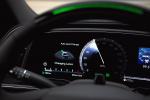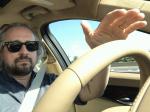Cadillac
- Cadillac announced that its hands-free driver-assistance technology, Super Cruise, will come to two new sedans and the upcoming 2021 Escalade SUV.
- Super Cruise was previously available on only the flagship CT6 sedan, and the technology has been upgraded to enable automated lane-changes.
- The Escalade is under sales pressure from a revamped Lincoln Navigator.
- Visit Business Insider's homepage for more stories.
Super Cruise, Cadillac's driver-assistance technology that allows hands-free highway operation, is about to get a big expansion.
While it's only been available on one model up until this point, the CT6 sedan, General Motors' luxury brand announced on Tuesday that Super Cruise will soon come to the new Escalade SUV, as well as the CT4 and CT5 sedans — all for the 2021 model year, and with improvements to the current system. The Escalade is slated for a 2021 model-year redesign, and we should see it in 2020 before it goes on sale in the fall.
"This is our most extensive update we've made to Super Cruise since its debut," Super Cruise chief engineer Mario Maiorana said in a statement.
"We have made a number of improvements to make Super Cruise more intuitive, better performing and more accessible for our customers," he added, noting that the technology has been updated for an improved "user interface and hands-free driving dynamics."
Super Cruise isn't hands free all the time; it's limited to highway operation, and it obsessively monitors drivers when in use. The technology relies on detailed laser-radar maps and GPS feeds, so if Super Cruise gets outside of its comfort zone, the driver is back in business.
But when it's engaged, Super Cruise is the best system on the road.
The system can now execute lane changesThe major change to Super Cruise is that the system will permit lane changes on "compatible highways."
Using the turn-signal stalk when Super Cruise is engaged, the driver can instruct the vehicle to seek an opportunity to switch lanes. Then the tech takes over, looking for an opening in traffic and determining whether there's sufficient space to execute the maneuver.
Cadillac improved rear-facing sensors and advanced software algorithms in order to add the feature to Super Cruise, Maiorana said, which will allow the system to "confidently track vehicles approaching from the rear."
"As a result of these improvements, we are able to ensure that Super Cruise will hold in its current lane and only change when a sufficient gap exists," Maiorana said.
When I sampled Super Cruise in 2017, I was thoroughly impressed with its capabilities — mainly because the system does the one thing it does well very well, indeed. No other system I've tested since, including Tesla Autopilot, handles highway driving with enough aplomb to function in fully hands-free mode.
Cadillac has taken its time rolling out Super Cruise across the range. It debuted in the flagship CT6 sedan, but that vehicle has been caught up in a sales downturn for four-door sedans in the US.
Cadillac wasn't going to let that happen with the new Escalade, arguably the most important vehicle in its lineup. The Escalade, introduced in the late 1990s and last redesigned for the 2015 model year, has lost some thunder of late to a revamped Lincoln Navigator, which was well-received by the market when it arrived in late 2017.
The question now is about Cadillac's timetable to bring Super Cruise to its all-important crossovers, the XT4, XT5, and XT6. With crossover popularity rising, those vehicles should lead the brand's US sales charge into the first half of the decade.
NOW WATCH: The rise and fall of Cadillac
See Also:
- 3 executives at top flying-car startups reveal their visions for the future of 'urban air mobility'
- The CEO of Oman Aviation Group says there are 3 things that keep him up at night
- Oman Air plans to double down in the US market, seeking expansion opportunities
FOLLOW US: On Facebook for more car and transportation content!

